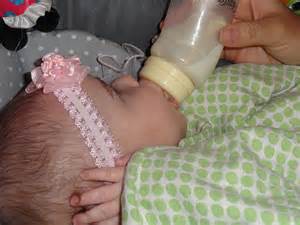Manganese in Drinking Water
Guideline Value and Concerns
Note: As an Amazon Associate I earn from qualifying purchases.
Exposure to manganese in drinking water has become a matter of growing concern for many people.
The adverse effect of excessive exposure to manganese is well known to welders, many of which have suffered neurological problems as a result.
However, we are all exposed to a certain amount of manganese from various sources, including water.
Thus, it is important to understand the effects of manganese, and when we need to take action to reduce exposure.
Manganese in Drinking Water
Manganese is a trace element which naturally occurs in water, plants and soil. Human bodies need a very small amount of manganese for a variety of bodily functions.
However, an elevated consumption of manganese through food or water has been linked to neurological problems in children.
In 2006, the World Health Organization (WHO) lowered the guideline value of manganese in the water we drink from 500μg/L to 400μg/L.
However, two scientists from Karolinska Institute in Sweden suggest that even this revised guideline of 400μg/L is not safe, especially for infants.
Infants and Manganese
According to the National Institutes of Health, as per the study done by Swedish scientists, infants are highly prone to neurological disorders due to excessive consumption of manganese through drinking water.
This is because infants retain higher amount of manganese in their bodies as compared to adults. They excrete less and absorb more.
The powdered formulas for infants already contain manganese in concentrations that are almost 100 times higher than the manganese concentrations found in breast milk.
When this powdered formula is mixed with water containing manganese having the value of 400μg/L, it substantially increases the manganese limit that is set forth by ECSCF (European Commission’s Scientific Committee on Food) for powdered formulas for infants.
WHO's Guideline Value for Manganese
Many experts all over the world believe that WHO’s current guideline value of 400μg/L for manganese in drinking water is higher than it should be.
WHO came up with this value on the basis of NOAEL (No Observed Adverse Effect Level) estimation for manganese found in daily food items.
For allowing the possibility of higher bioavailability of manganese when it is consumed with water, NOAEL’s guideline value of 11 mg per day was multiplied by 3, which was taken as an uncertainty factor.
By considering 60 kg (about 132 lbs.) as an average bodyweight of adults, TDI (Tolerable Daily Intake) of 60μg of manganese for every kilograms of body weight was then derived.
By assuming that at least 20 percent of this value will come from water and an adult will generally consume 2 liters of water in a day, WHO fixed the guideline value at 400μg/L.
For this reason, WHO referred to a review by J.L. Greger in the Journal of Nutrition that suggests no adverse effects were found even when the manganese intake of people was 10.9 mg per day.
However, this article is not an ideal source for setting a guideline that is related to the amount of manganese in water.
There are a number of loopholes in this review; for instance, J.J. Greger did not consider the intake of manganese in different types of diets.
The paper by the Swedish scientists can be presented as an excellent case for the re-evaluation of the data which WHO used for setting the guideline value for manganese in drinking water.
While healthy adults might not face any problem due to the current guideline, infants, children and people who are sensitive may be at risk of developing neurological problems.
References
Ncbi.nlm.nih.gov; Time to Re-evaluate the Guideline Value for Manganese in Drinking Water? 2007.
Return from Manganese in Drinking Water to What Is in Tap Water?
If you would like to reproduce or republish this article or any other article on this site, feel free to do so but please include a reference or link to the article at WaterBenefitsHealth.com.
Sign Up for Our Monthly
Newsletter
Visitor Comments
"This was the best and most straight forward info on the net yet. I asked a question and got an answer that made sense. Thank you so much!" - Linderlinder
FINALLY!!! I have been wondering about this for years with no 'solid' answer. This is exactly what I've been wanting to know! Thank you for this share..." by Andy
"Thank you for the information, Nancy. I appreciate it. Your article and findings are very helpful, referring to dehydration." - Carolyn
"Lemon water is one drink both my wife and I can't drink. It upsets our stomachs. We are in our sixties and in very good health—well, better health now that we drink about 2 liters plus of water each day. It has made so much difference to our digestive systems and recovery every day. Thank you for your website and effort." - Rod



